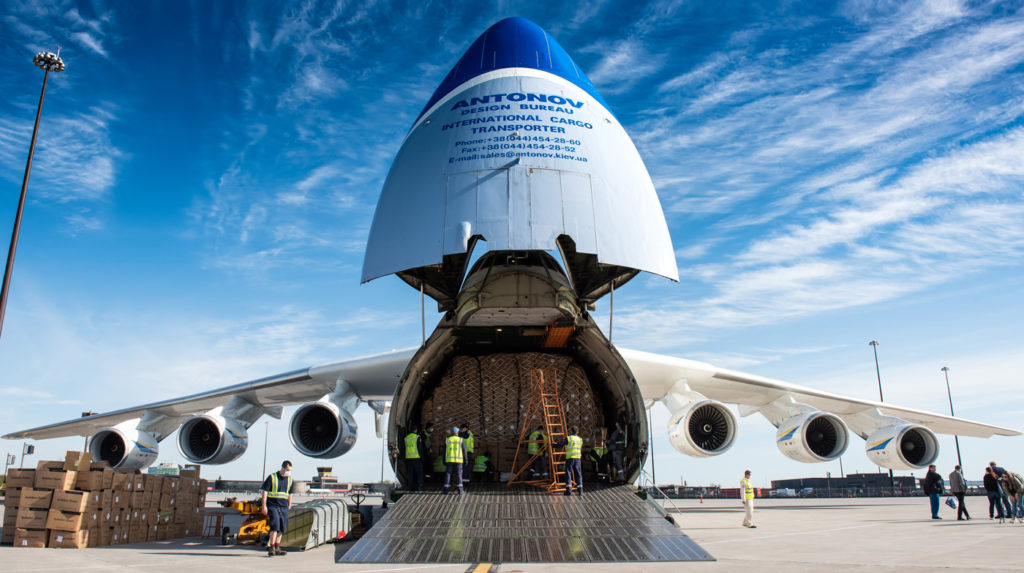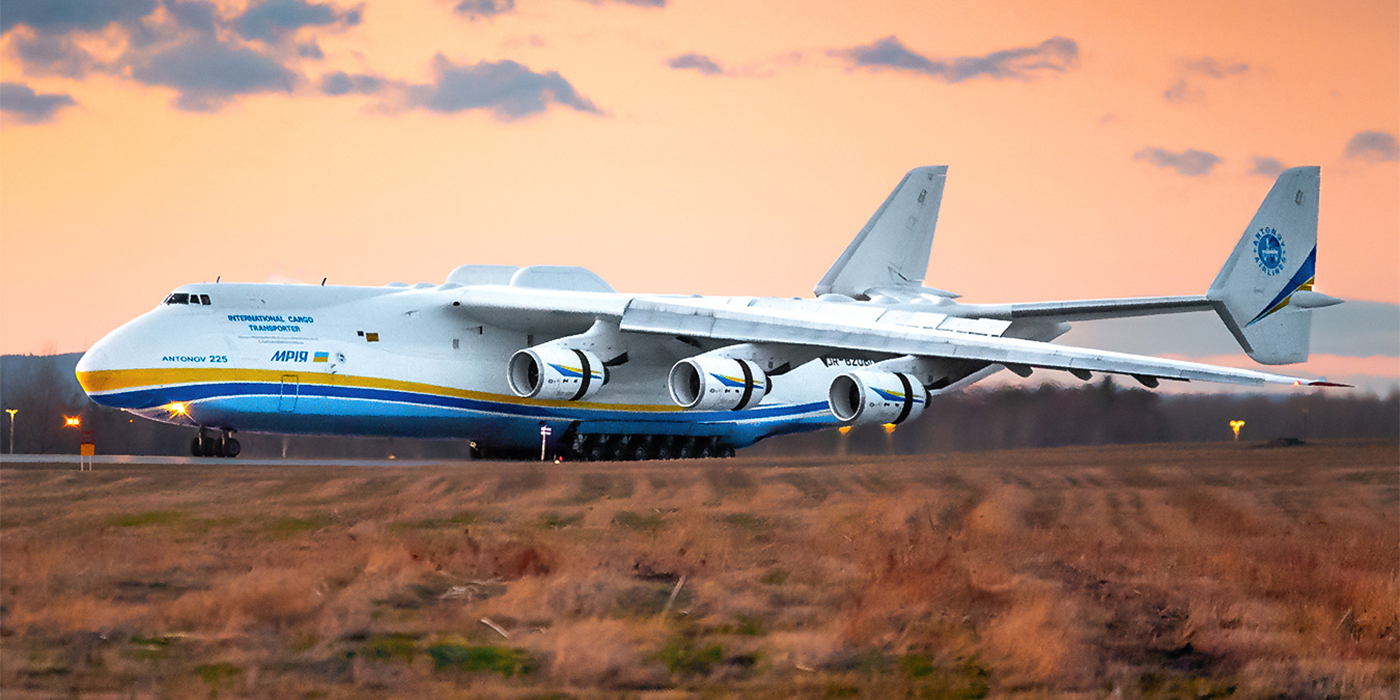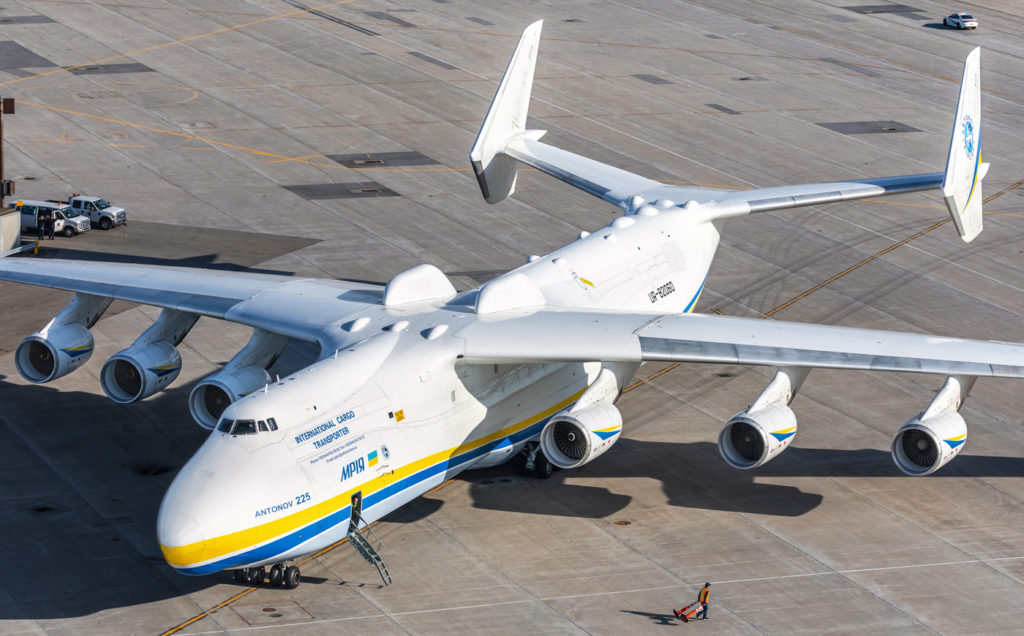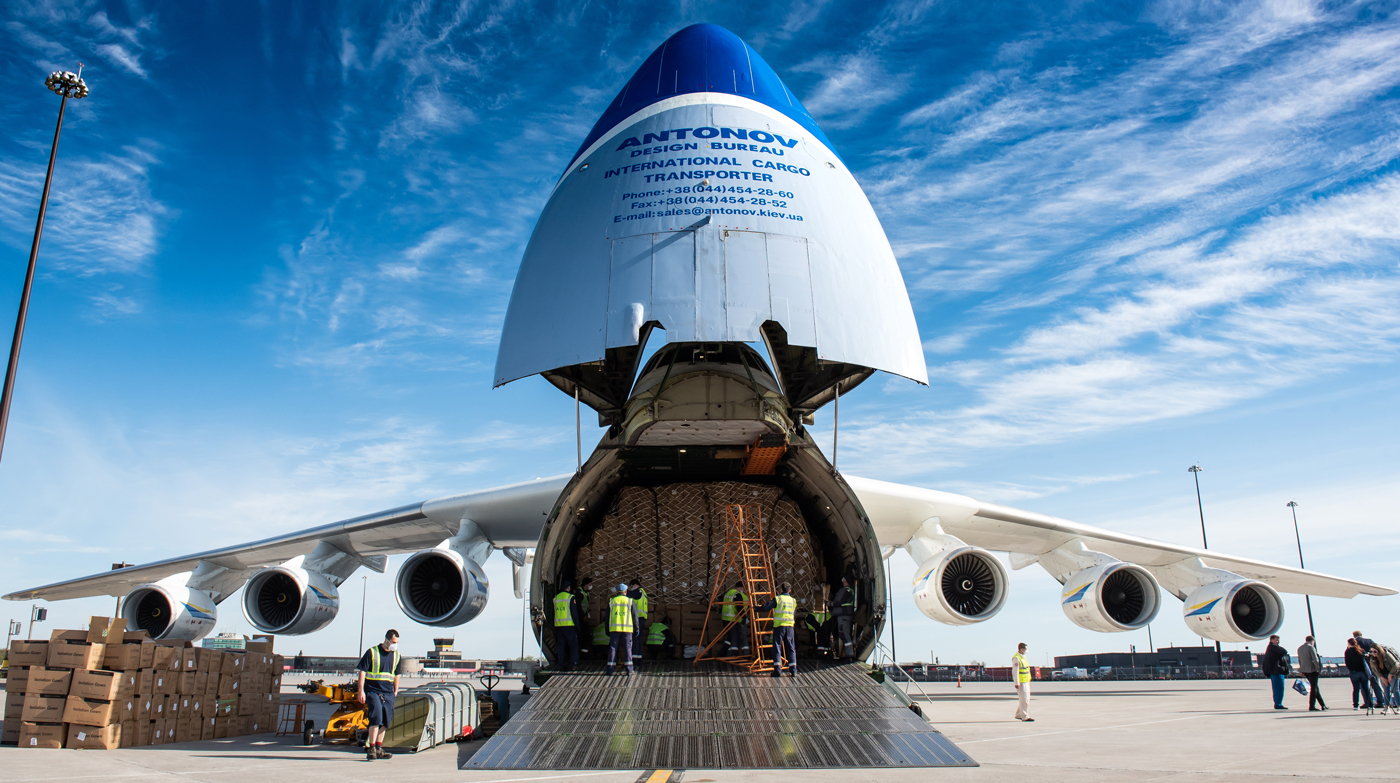Estimated reading time 8 minutes, 2 seconds.
On March 25, at 7:56 a.m. eastern time, a subset of aviation enthusiasts around the world felt a tremor in the global airspace. Actually, it was more like a little vibration. From their phones. The app FlightRadar24 had buzzed to life to inform those who’d programmed in this alert that the Antonov AN-225 Mriya, the largest airplane in the world, had taken to the skies seconds before from its home airport in Kiev, Ukraine.

This was a very big deal. The distinctive twin-tail, 600,000-pound cargo aircraft, with its six turbofan engines, 290-foot wingspan, and cavernous interior, had been grounded for about 18 months for maintenance and upgrades. These included new engine control systems, LCD instrumentation, LED lighting, and a host of other improvements that will help the aircraft — only one of which was ever built, in 1985 — stay in service for another decade or more. Its return to flight allowed plane spotters and general aviation enthusiasts to resume their tracking of the aircraft, potentially even seeing it pass through their local airports, just as the rest of the world’s airplanes were being grounded due to the shocking impact of the COVID-19 pandemic on commercial aviation.
Indeed, Mriya’s movements have been one of the few bright spots in aviation over the last several months, as the AN-225 has been in virtually continuous service flying personal protective equipment from China to different locations around the world.
Including fuelling stops, Mriya — which means “dream” or “inspiration” in Ukrainian — has made over 30 flights so far, visiting Paris, Anchorage, Leipzig, Warsaw, Montreal, and Athens, along with Tianjin, China, where it collects supplies, and Kazakhstan and Azerbaijan, its frequent stopovers between Europe and Asia. Registered UR-82060, it’s due to make more trips to North America in the coming weeks.

What’s more, the hulking blue and white high-wing airplane has become something of a rock star in its current life, much more than it ever was previously. Each stop has drawn significant crowds for its arrival and departure. The visit to Montreal, in particular, turned into something of a frenzy, with news outlets and hundreds of enthusiasts – at this point, it’s safe to call them fans – turning out. (The massive aircraft hadn’t landed at Mirabel since 2012.)
In addition, FlightRadar24 has blogged about the aircraft, and a 12,000-member Facebook group that tracks the AN-225’s whereabouts and which has existed for several years now, dubbed simply “Antonov An-225 Mriya,” has seen a surge in members and posts since the return-to-flight in March, including tons of photos and videos of its comings and goings. During its recent layover in Athens, someone trained a camera on the aircraft and live-streamed every minute of its visit, with the feed drawing dozens of viewers at any given time — even when it’s just sitting there in the middle of the night.
So what gives? Why has the Antonov AN-225 become such a sensation at a time when everyone around the world is supposed to be sitting at home taking Zoom calls? Lots of reasons. Overwhelmingly, it’s the aircraft itself, a singular piece of late-Soviet history that was originally intended to transport the country’s own version of a space shuttle, called Buran. As the Soviet Union fell apart and Buran was cancelled, Mriya, too, seemed doomed to the scrapyard. But its remarkable lift capabilities came in handy, and eventually Antonov built traction offering its services — along with those of its other cargo aircraft, including the smaller AN-124 upon which the AN-225 is based — to customers around the world. It once carried a generator weighing 417,000 pounds, a world record for a single item, and its total payloads can reach 550,000 pounds.

So it’s a rare bird, and worth seeing because of its history and raw capability — an appeal that dates back years.
“Mriya has always had an enthusiastic following due to the nature and uniqueness of the aircraft, and its place in history as the largest cargo aircraft ever flown,” said Kev Mclean, an administrator of the Facebook group and former U.K. sales agent for Antonov.
But he adds that much of the recent surge in interest can also be attributed to its current high-profile missions — delivering medical supplies to nations battling coronavirus — and the breadth of tracking services available to enthusiasts. “People are more aware of the aircraft now, and are following it on the new apps that give you live flight information,” said Mclean.
In fact, the AN-225 routinely ranks as one of the most-tracked individual aircraft on FlightRadar24, according to the service’s community relations co-ordinator, Ian Petchenik. “Without fail, whenever it moves, people are watching it,” he said, adding that much of the appeal is its one-of-a-kind nature. “It’s also unique in its configuration, size, where it can land, and other qualities.”

But there’s still another element: The mystery that often surrounds it. While most of its flights today are pandemic-related, its usual cargo can vary wildly from massive industrial machines to military cargo. (In fact, it’s not particularly optimized for its current missions flying medical supplies, but low fuel prices have made it a viable and attractive option right now.) As a result, aviation enthusiasts spend a lot of time trying to determine what it’s carrying and for whom. Antonov doesn’t publish its flight schedule, let alone its contents — especially if the client is sensitive. So it becomes a global guessing game to determine what the aircraft is up to. “It quickly becomes a bit of a detective story,” said Petchenik.

Finally, there are several human factors that influence the current interest in Mriya’s flights. Aviation enthusiasts don’t have a lot to cheer on right now, and people are undeniably bored and restless at home. If the largest airplane in the world drops into a given airport, you can bet crowds are going to show up to see it.

To that point, you can add the pure physical thrill of seeing such a massive aircraft flying over your head – if you’re able to secure a position on the end of the runway. Mriya moves with a combination of stateliness and exhilarating energy that can only be fully grasped in person. So stay-at-home orders or not, people are going to find a way to experience this spectacle. It’s a rare treat that will brighten a lot of moods in otherwise very dark times.
Eric Adams is a longtime transportation and technology journalist and analyst, a regular contributor to Wired, Popular Science, Gear Patrol, Forbes, and The Drive, and a professional photographer.

